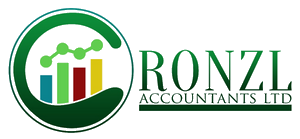The HMRC uses the payment on account to receive money from sole traders during the tax year.
Payment on account is a system that is used by the revenue to ensure that taxpayers under Self-assessment contribute towards future unearned tax and national insurance even with the assumption they would earn the same amount of income in the previous tax year.
The amount of payment on account applied for the taxpayers is based on the previous year’s tax due from the self-assessment returns submitted to HMRC.

Illustration of Payment on Account
Akeem worked as a plumber and started trading on the 6th of April 2021.
He declared his income from sole trading to the HMRC under the self-assessment.
Akeem’s net trading income of £20,000 for 2020/21.
His personal allowance of £12,570 would be deducted from the net trading income, so taxable income would be £7,430 and tax due will be £1411.70
The HMRC would add £705.85 to the tax that is due on the 31st of January 2023.
When the new tax year commences the HMRC, will also expect payment on account on 31st July 2022.
The revenue requests this payment on account based on the assumption that in the new tax year, Akeem would have the same trading income as earned in the previous tax year

Taxpayers that are exempted from payment on account
There are some taxpayers that are exempted from making payments on account of the self-assessment regime.
This set of self-employed individuals was also employed in the tax year in assessment.
The condition for this is that at least 80% of taxes are deducted through PAYE.
The main reason for this exemption is that their tax code is usually adjusted to reflect the income through self-assessment.
So invariably the payment on account is applied through the PAYE rather than the self-assessment system.
Illustration 2 on Payment on Account.
Ade is an Engineer, he works for Council Industry limited as an Architect.
He earns £80,000 in a tax year
He also advises clients in his spare time mainly on weekends so receives some payment from Self-employment.
He has registered for self-assessment to declare the £10,000 he has received from his freelancing activities.
Ade’s total income for the tax year 2021/22 was £90,000.
When Ade submits his first self-assessment returns, he would pay a tax of £4000 (his tax rate is 40%).
However, because Ade pays more than 80% through the PAYE, HMRC would request payment on account by adjusting his tax code in 2022/23.

What about if I am earning less tax in the current tax year?
When an indivual earns an income that is less that what was earned in the tax year the return was submitted,they could inform HMRC they would like to reduce the tax the amount expected to be paid to them
The revenue could be adviced of this changes whilst submitting their returns to the revenue or call HMRC to support them with adjustments
HMRC would adjust the payment due to reflect the income stated by the tax payer.
However if this is not accurate, interest would be added to the payment due.
Conclusion
Having an understanding of the way the payment on account operates is very impaortant.
The reason for this is because when the payment are not paid on time,The revenue penalises taxpayers for late payment.
They also add intrest on the payment that has not been paid.
Also submitting tax returs early by indidviduals also allows then to pay the right amount of tax on account rather than on assumption.
If you would like to read more,kindly click.
If you would like us to submit you with the submission of your tax returns,our fantastic team could support you ,kindly contact us.
